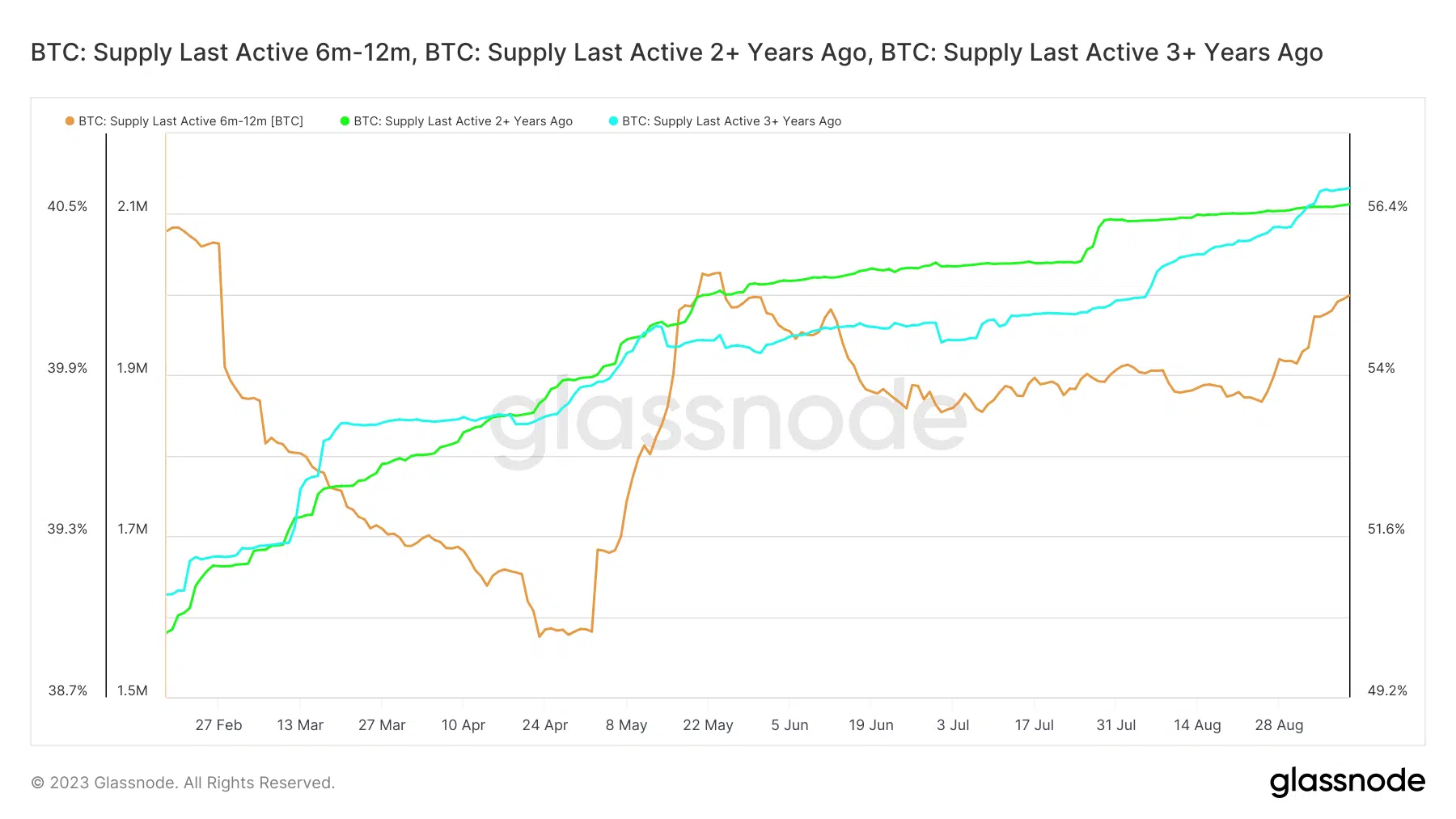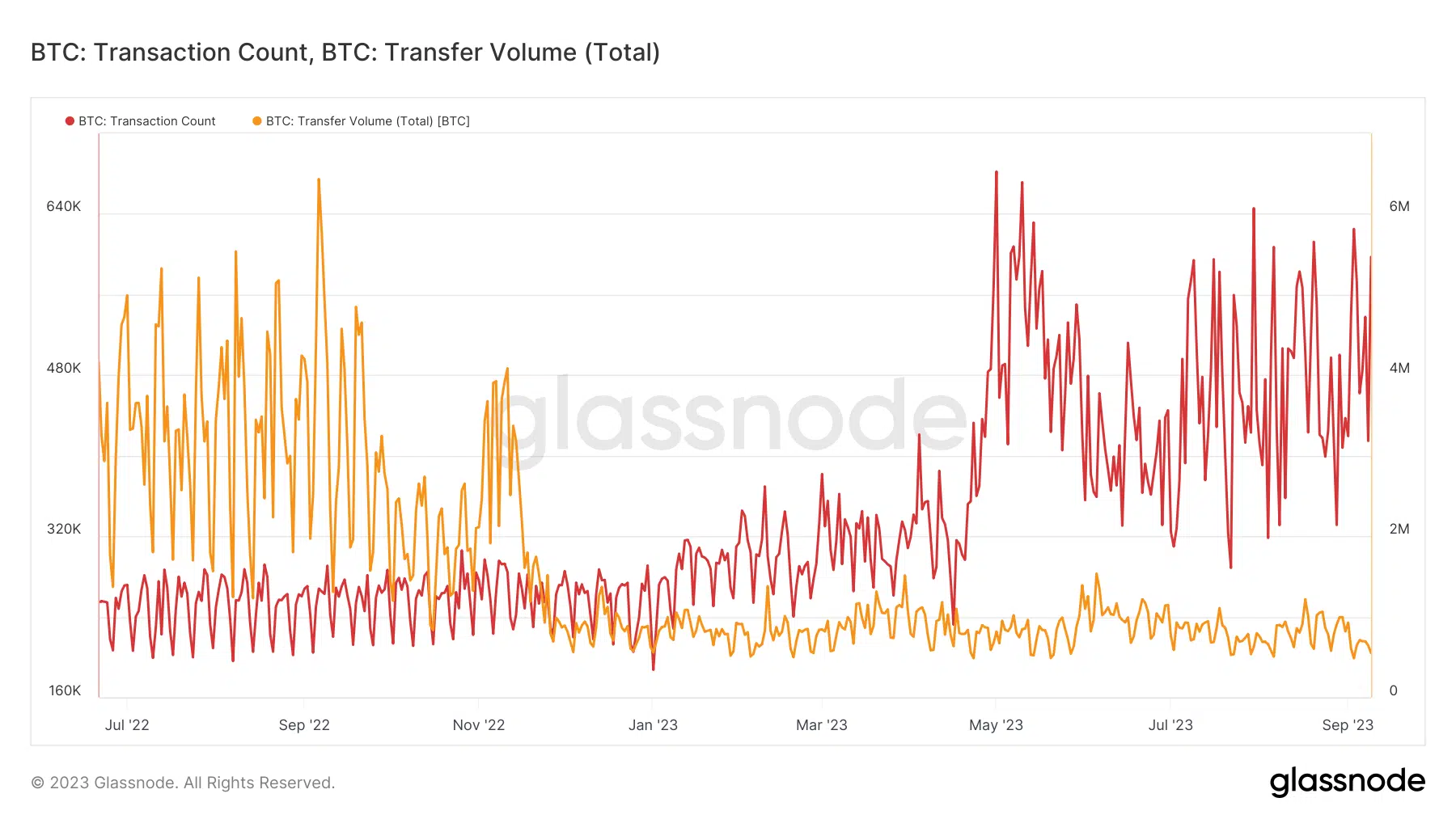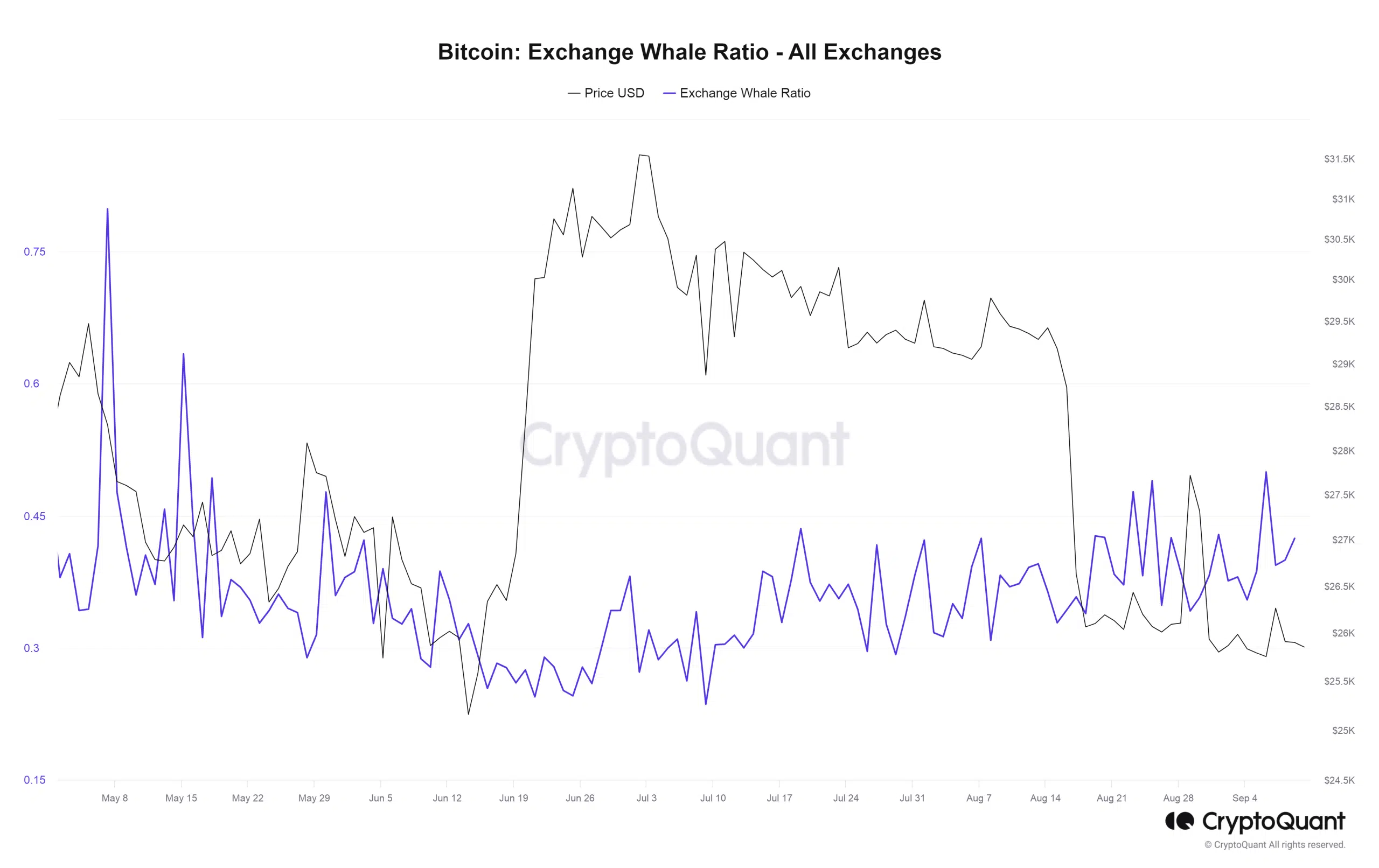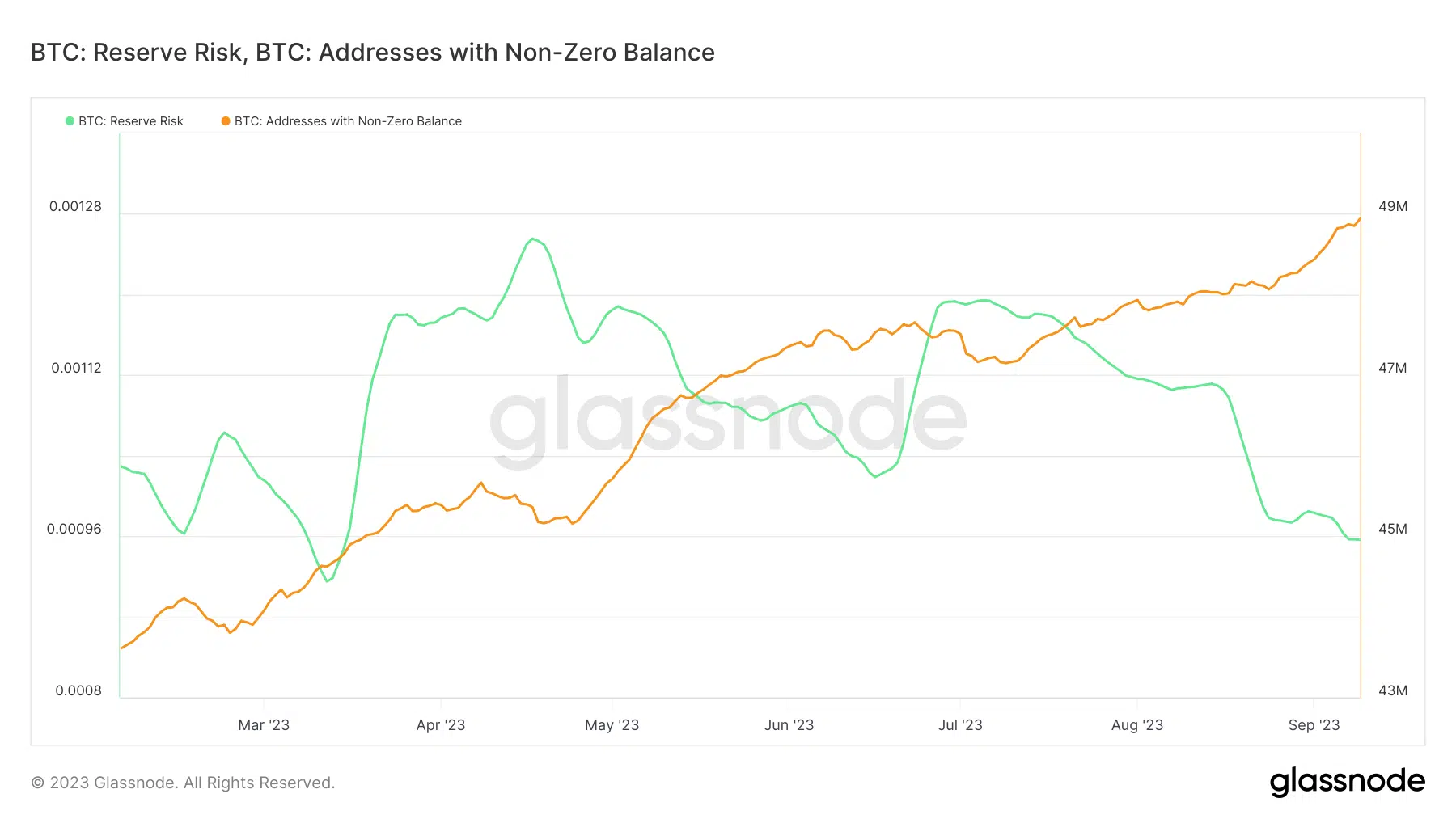Bitcoin accumulation on the rise as investors go in for the long haul

- Bitcoin’s liveliness plummeted to its lowest point in the last two years.
- Confidence in Bitcoin’s long-term outlook could attract more players to the market.
Bitcoin [BTC] in recent months has witnessed a sea change driven by a dramatic shift in investors’ perceptions.
Rather than capitalizing on its wild swings to make quick riches, holders of the king coin were coming to grips with its “store of wealth” qualities and a potential refuge during economic downturns.
How much are 1,10,100 BTCs worth today?
Consequently, the HODLing mentality has taken over. Long-term holders (LTH) have increasingly looked to consolidate and increase their stashes lately.
Bitcoin was less lively
An effective but lesser-used measure to gain insights on investors’ hoarding behavior is the Liveliness metric. As per a recent post by Glassnode on social platform X, Bitcoin’s liveliness plummeted to its lowest point in the last two years.
? #Bitcoin $BTC Liveliness just reached a 2-year low of 0.596
View metric:https://t.co/nVxCWOijbO pic.twitter.com/nSHFssz1eF
— glassnode alerts (@glassnodealerts) September 9, 2023
For the uninitiated, Liveliness is the opposite of HODLed Bitcoins. Therefore, a lower Liveliness implied that LTHs were accumulating heavily. A higher liveliness, on the other hand, would indicate that the cohort was aggressively selling their assets.
Liveliness metric swings between the two extremes of 0 and 1. As evident from the above data, Liveliness has been in a steady downtrend since the FTX collapse last November. Notably, this was also the peak of 2022’s crypto winter when Bitcoin fell below $16,000. It made economic sense for most holders to abandon trading activity around this time.
However, despite a spirited price rebound in 2o23, the HODLing sentiment has only grown stronger. Bitcoin’s resilience during the U.S. banking crisis in March, insulation from U.S. regulators’ hawkish gaze, and the upcoming halving event, compelled investors to assess its long-term growth potential.
Dormant supply scales new peaks
Investors’ lack of willingness to sell BTC was also exemplified by the token’s growing dormant supply. Most age bands recorded an uptick in HODLing activity.
Noticeably, the portion of Bitcoin’s supply held for at least two years reached 56% while the stashes which haven’t been transacted on-chain for at least three years hit 40%.
Interestingly, some of the recent acquirers of the coin also exhibited hoarding tendencies. The coin supply which was older than six months but younger than 12 months shot up to a three-month high.
Whales maintain distance from exchanges
Bitcoin also witnessed a significant decline in the transfer volumes settled on the network. While the number of low-volume transactions clearly boomed, trades involving the movement of a large number of tokens dwindled, as shown by Glassnode.
Primarily, this reflected the muted interactions between whale investors and exchanges. Take note of the huge drop in transfer volumes in 2023 when compared to the period preceding the onset of crypto winter. At the time, whales were offloading their bags in order to lock in huge profits on their initial investment.
Cut to 2023, things have changed. On-chain evidence suggested that whales were stockpiling for the big game.
Exchange Whale Ratio, which measures the relative size of the top 10 inflow transactions to total inflows on an exchange, showed a reading of 0.42 at the time of writing. In other words, of the total inflows to the exchanges, the share of whales was just 42%.
Whales’ reluctance to bring their holdings to exchanges affected the overall count of on-chain exchange deposits. Transfers to exchange addresses dipped to a 3-year low, according to the latest updates from Glassnode.
? #Bitcoin $BTC Number of Exchange Deposits (7d MA) just reached a 3-year low of 1,806.756
View metric:https://t.co/v3uKq4dCjX pic.twitter.com/dsE1wTQI45
— glassnode alerts (@glassnodealerts) September 9, 2023
Is your portfolio green? Check out the BTC Profit Calculator
Will more participants enter the market?
Having observed the above trends, it became clear that HODLing was indeed the dominant sentiment in the market. However, it begs the question – Will the increased hoarding mentality eventually lead to an increase in the economic value of Bitcoin?
Glassnode’s Reserve Risk indicator declined dramatically in 2023, indicating that long-term investors had high confidence in Bitcoin. A person observing from the outside would see this as a signal to enter the market, paving the way for increased network adoption.
The steady rise in addresses holding a positive value of Bitcoin was a testament to this narrative.










